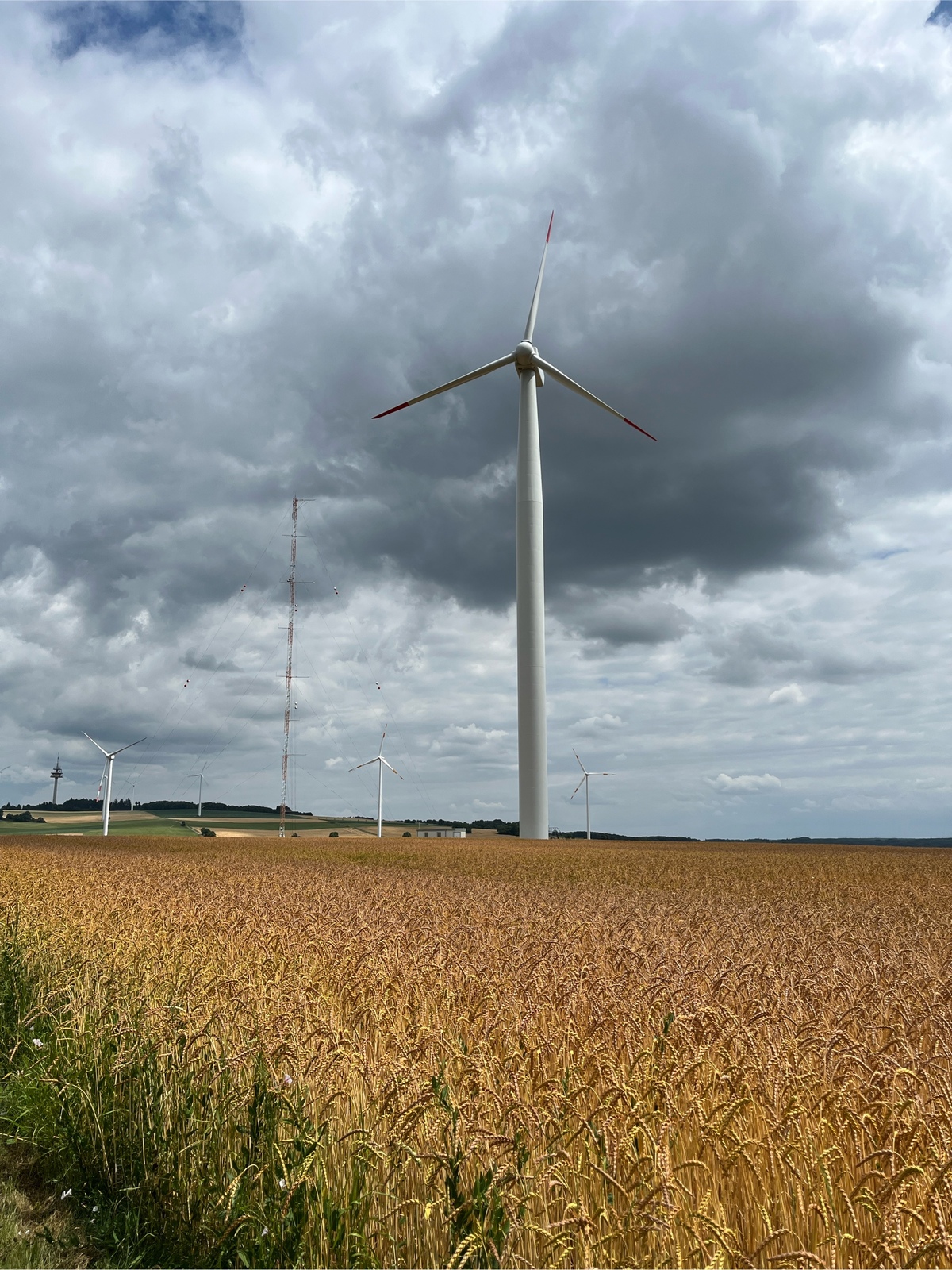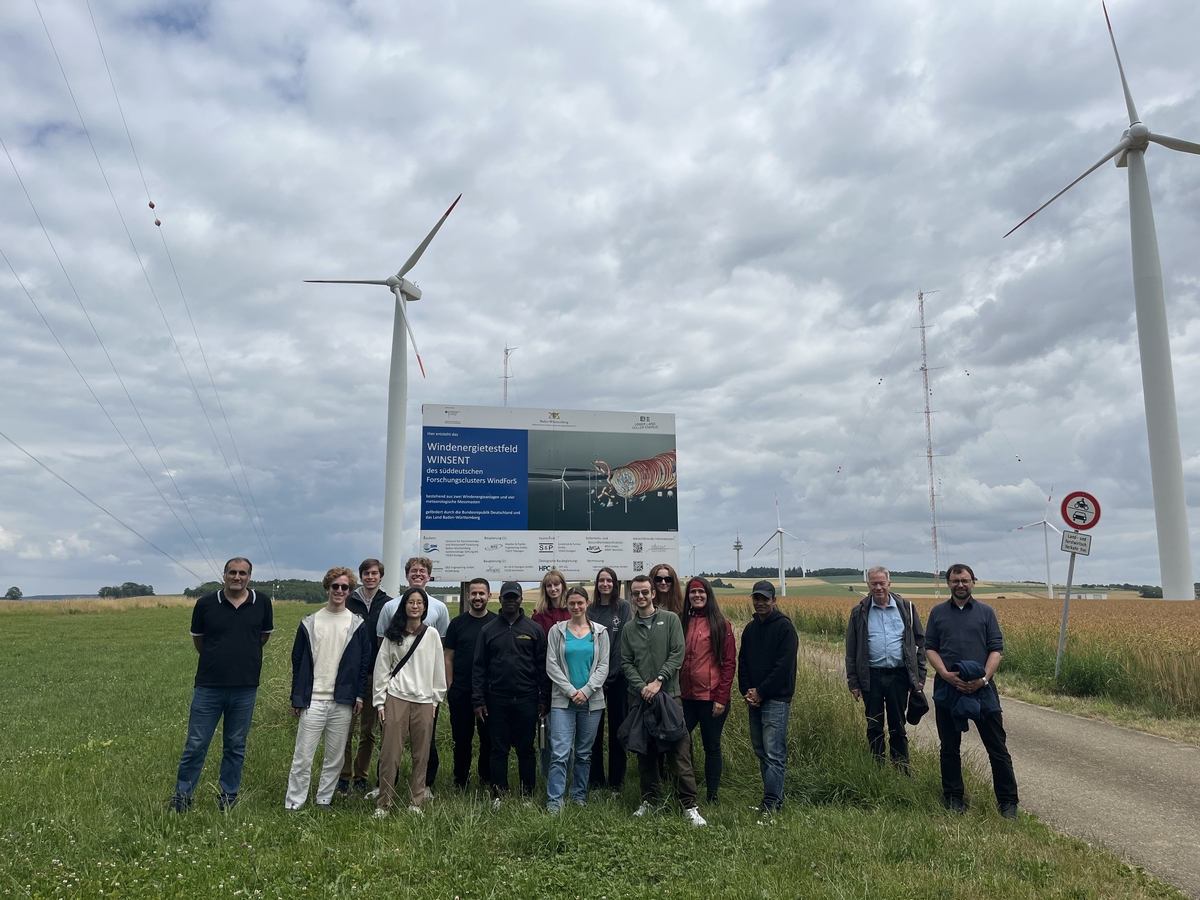Wind Energy in Complex Terrain
As part of the Energy Meteorology lecture in the Master's program in Meteorology and Climate Physics at KIT, students took a field trip to the WINSENT wind energy test site near Stötten in the Swabian Alb in July. The test site, operated by the Center for Solar Energy and Hydrogen Research Baden-Württemberg (ZSW), offers unique conditions for researching wind turbines under realistic conditions in complex terrain – i.e., in mountainous regions, which are particularly common in southern Germany.
The research test site consists of two wind turbines, each with a rated output of 750 kilowatts and a hub height of 73 meters. These are complemented by four 100-meter-high meteorological measurement masts, which are positioned in the main wind direction in both the inflow and wake areas. Other measurement systems record, among other things, the energy exchange between the ground and the atmosphere as well as cloud development. In addition, lidar systems enable high-resolution recording of wind flow up to great heights above the terrain.
During a guided tour led by the ZSW team, the students gained insights into current research projects related to the operation and optimization of wind turbines. Topics discussed included meteorological flow processes in complex terrain, forecasting wind energy production, machine learning applications and nature conservation research at the site. A particular highlight was the visit to the interior of a wind turbine.
The excursion impressively demonstrated how closely atmospheric processes are linked to the development of renewable energy production. It complemented the Energy Meteorology course, which is held at KIT in cooperation with Dr. Marion Schroedter-Homscheidt, group leader for energy meteorology at the Institute of Networked Energy Systems at DLR, and apl. Prof. Dr. Stefan Emeis at the University of Cologne. The course prepares students for the future-oriented and interdisciplinary field field of energy meteorology.


